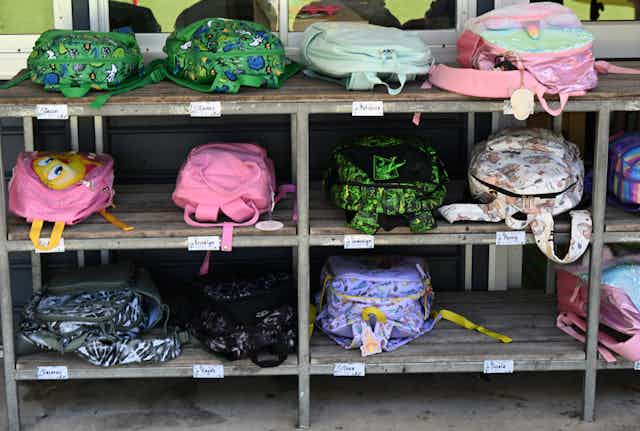It’s back-to-school time for students and staff across Australia. But the politics of school funding has also turned up at the front gate.
On Wednesday, Federal Education Minister Jason Clare told nearly 325,000 Western Australian students and their families that by 2026, theirs will be “the first state in Australia to fully fund public schools” (the Australian Capital Territory already has full funding). The federal government has pledged an additional A$774 million, which is to be matched by the WA government.
It’s a significant announcement, given the next national funding agreement (due by the end of 2024) is still to be thrashed out between the Commonwealth, states, territories and non-government school sectors.
The government has also only just released a major review looking at what the next phase of school reforms should involve.
What does the WA news mean for schools, and what does full funding really involve?
What do we mean by “fully funded”?
“Fully funded” is often talked about when it comes to education debates. To the casual observer, the aspiration is a peculiar one. At one level, public schools across all states and territories are already funded almost entirely by governments.
State and territory governments provide most of the recurring annual funding for their school systems. The federal government provides about 20% of the total funding via agreements made every five years. As the Productivity Commission notes, 2.6 million students in Australian public schools cost federal and state taxpayers A$54.9 billion, or just shy of $21,000 per student per year.
But as significant as this amount might seem to the wider public, this isn’t enough to provide all students in public schools with what has been agreed is a reasonable standard of funding.
More than a decade ago, a school funding review led by David Gonski recommended Australia introduce a “schooling resource standard”. This would be a mechanism to ensure fair and equitable distribution of government funding. This means funding should be based on need – schools with greater levels of student need receive greater funds.
On top of a base rate, there are extra loadings for schools with students with disability, students of Aboriginal and Torres Strait Islander background, students with socio-educational disadvantage, students with low English proficiency, small schools and schools in regional and remote locations.
This system seems uncontroversial, particularly when those who benefit most are those most in need.
But despite broad agreement about the idea, there has been (and still is) a long wait to see it put into practice. The timeline to “fully fund” all Australian public schools is still set for 2029.
To date, only public schools in the ACT have had full funding allocations under this model. No other state or territory funds their public schools to the full level required.
Is there a catch?
More money for education should be applauded, especially when there is broad acknowledgement public schools across Australia are inadequately funded.
What looms large over this announcement, though, is the question of what outcomes could be expected from investing the money and how they will be achieved.
It’s only 12 months since the Productivity Commission delivered a damning assessment of Australian education. The report noted a lack of transparency over funding agreements, as well as poor educational outcomes for the money. It also repudiated onerous “low value” administrative burdens on school leaders and teachers.
If steps are not taken to address these criticisms, the money risks being accompanied by additional bureaucratic burden.
It’s also worth highlighting how some of the most serious issues facing schools – teacher shortages, student behaviour problems and teacher mental health and personal safety concerns – are unlikely to be resolved simply by providing more money.
The increased funding is necessary and welcome. But it’s not enough on its own.
Read more: What is the National School Reform Agreement and what does it have to do with school funding?
Where to now?
It’s hard to ignore the timing of this announcement at the beginning of a year when the next National School Reform Agreement will be determined.
This is a joint agreement between the Commonwealth, states and territories. It sets out national policy initiatives all governments agree to implement over a five-year period.
Later this year, we can expect each jurisdiction to sign individual agreements with the federal government. This will include what they will do to improve student outcomes (in line with the reform agreement), as well as the funding states and territories will contribute as a condition of receiving federal funding.
At the outset of this process, the WA announcement indicates some players at least are considering bold reform.
But the scale of the political challenge is already evident. Only hours after the announcement, education ministers across the nation were refusing to signal their hearty agreement. Instead, they called on the federal government to increase its contribution from 20% of the school resourcing standard up to 25%.
It is also important to note that WA has only signed a “statement of intent” so far. This is not a final deal. As Clare’s media release noted, this “provides a basis for the negotiation of the next National School Reform Agreement and associated bilateral agreement”.
There is a lot more work to go in this very important year for Australian schools. But this first announcement is is a positive step. Further, concrete agreements can hopefully be reached and bring forward the day when all schools receive what they need.

